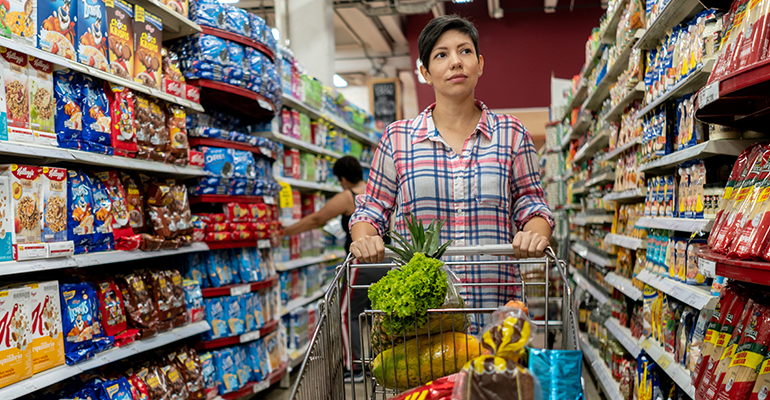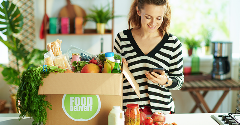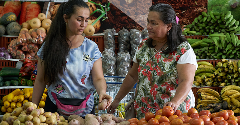News
Trust, comfort, convenience, and reframing ageing dominate in the US
8 Mar 2024Clear communication, comfort choices, optimising eating occasions, and changing how we think about ageing are among North America’s top food and drink trends in 2024.
With the cost-of-living crisis continuing to affect food and drink prices, access, and consumption worldwide, spending struggles are reverberating across the sector’s leading trends in 2024. Market intelligence company Mintel has released its 2024 global food and drink trends for North America, highlighting the impact of price sensitivity on consumer shopping habits and patterns.

Over half of US protein consumers (53%) said increasing inflation has made them less likely to opt for new foods. Additionally, 48% of US grocery shoppers agreed that rising prices have led them to avoid purchasing some products because they are too expensive, while it has caused 46% of them to buy more store brands to save money.
Trend #1: Demystifying processed and ultra-processed foods (UPFs)
The ‘Trust the Process’ trend highlights the necessity of clear communication to support consumers with understanding processed and ultra-processed foods (UPFs) and drinks and their role in consumer diets to help them make informed decisions.
The elevated awareness of processed foods and UPFs encourages consumers to delve deeper into products’ ingredients, nutritional profiles, and production processes. Over a third (34%) of US adults say that beyond price and taste, a product’s highly processed nature is a top concern for consumers when buying food or drink.
An evolution of the terms ’junk food’ and ‘clean label’, alongside the use of ‘UPFs’ will see consumers apply closer scrutiny to items that contain high levels of fat, sugar, and salt (HFSS) and those made with ingredients and manufacturing methods unavailable in at-home kitchens.
Consumers consider eating occasions and consumption frequency to inform when and how they have processed food or drink. Three-quarters (75%) of Canadian consumers who eat prepared meals agreed that ready meals are too processed to eat regularly. Brands and categories heavily associated with UPFs can explore creating alternatives to their existing products by formulating less-processed, better-for-you (BFY) versions.
In the coming year, there will be a heightened consciousness around processing and its different levels. Transparent on-packaging labelling and claims are anticipated. Media reports, regulations and voluntary statements relating to processing levels like NOVA or Siga ratings on packaging will become more common. Brands can reference the benefits of food processing techniques, such as methods that boost nutrition, restrict the formation and presence of contaminants, and improve sustainability.
A greater shift towards natural nutrition will increase interest in upcycled ingredients. While reusing ingredients that may typically be discarded, consumer demands for natural nutrition from familiar, less-processed sources will see a surge in the acceptance and uptake of upcycled ingredients.
Trend #2: Craving comfort
Amid the worsening climate crisis and awareness of its detrimental impact, consumers expect brands to maintain their sustainability efforts and actions. As the reality of the climate crisis deepens the global sense of fear and anxiety, consumers will want to access familiar products, valuing comfort as the main selling point for product purchases.
The sector will strive to make environmental commitments the core of its marketing communications. However, with more awareness around the proliferation of ‘greenwashing’, consumers are increasingly savvy about spotting promotional claims. Yet, sustainability is currently low on the priority list for US grocery shoppers, Mintel found. Over half (57%) of US adults agree that increasing living costs make food and drink sustainability less important to them.
With the congruence of climate change and the cost-of-living crisis, brands must prioritise cost, taste, and sustainability in their formulations to deliver comfort. To appeal to consumers, manufacturers are encouraged to invest in sustainability and promote comfort and taste as primary buying signals.
Over half (58%) of US adults expect companies to reduce packaging to a bare minimum. As a result, brands are committing to reducing packaging to limit plastic waste. Knowing the environmental impacts of products is also essential, with 50% of US adults expecting companies to be transparent about their product’s ecological credentials. Clear insights on product origins and manufacturing methods, such as sustainably sourced cocoa and jerky ‘made in the USA’, are important decision-making indicators.
In the post-Covid environment, and looking ahead as the climate crisis worsens, consumers will seek a united sense of reassurance and comfort. In the US, 42% of food and drink shoppers agreed that sustainability claims make indulgent treats more permissible.
Verifiable and transparent labels create credibility, trust, and confidence, enabling consumers to make informed and authentic sustainability purchases. One in three consumers wants a standardised labelling system for sustainability information. Brands will need to explain environmentally responsible initiatives in tangible, clear forms, like on-pack labelling.
#Trend 3: Rethinking demographics
Removing the stigmas and taboos surrounding ageing helps to reframe the demographic identifier and redefine healthy ageing. Generation X consumers between 45 and 59 years old are leading the new approach to healthy ageing and encouraging open conservations by destigmatising ageing concerns, like menopause, and promoting an extended health span.
Brands are focusing on addressing consumers’ variety of health concerns. Mintel found that 70% of US Gen Xers said their body doesn’t work as well as it used to, while UK research details that Gen Xers live longer but are in worse health than previous generations. Subsequently, brands strive to support Gen Xers through the transitional phases of their adult lives by helping them manage health goals with BFY snacks and hydrating drinks.
Next, brands will pay more proactive attention to better health plans earlier, especially for ‘The Sandwich Generation’, which describes consumers, often in middle age, who care for multiple generations of family members. Brands will strive to lessen consumer pressure by offering convenient products and helpful tools.
Trend #4: Optimising eating experiences
Convenience is a significant decision-making factor for consumers. Technology has helped to make meal planning, shopping, and cooking easier. Advancing and sophisticated technology such as artificial intelligence (AI) will help consumers strive to balance autopilot food choices with creative eating occasions.
Consumers’ need for efficiency will drive technology adoption so brands can reach consumers where they are. Emerging tech solutions, such as automated shopping lists, meal-planning apps, and AI, will move from an optional tool to an integral must-have.
We will see a transition from targeted brand placements to AI-crafted items. Brands will use AI to access data, including consumer feedback that inspires product development and the need for convenience, joy, or discovery in food and drink selection.
Related news

Generation X consumers lean into vitamin-based products
5 Mar 2024
Aged between 44 and 60, Gen X consumers want agency over their health and wellness and are adopting a preventative approach using vitamins and supplements to promote healthy ageing.
Read more
Pesticide residues in conventional baby food: A boost for organic?
29 Feb 2024
Nearly four in 10 (38%) of conventional US baby food products contain pesticide residues, according to research that also found that the organic samples were pesticide-free. Could this be an opportunity for organic or ‘pesticide-free’ produce?
Read more
Reviving childhood favourites: Healthier twists on classic snacks
20 Feb 2024
Consumers are increasingly leaning on brands for comfort and familiarity - a trend US-based brand Justin’s is tapping into. With its recent launch of Chocolate Candy Pieces, Justin’s is drawing on nostalgic marketing trends, while incorporating better-...
Read more
‘Healthy’ additives make ultra-processed foods more appealing
4 Jan 2024
Almost three-quarters (74%) of Americans would try an ultra-processed food if it provided a health benefit such as better sleep, better immunity, or increased energy, according to an industry survey.
Read more
South-East Asia: Renewed interest in sports nutrition products
19 Dec 2023
South-East Asia’s renewed focus on the elderly has also given rise to an emerging sports nutrition sector that serves to address similar health issues such as immune support and bone and joint health.
Read more
E-commerce is biggest sales channel for US supplements
30 Aug 2023
E-commerce has become the biggest single channel for sales of dietary supplements in the US, according to Euromonitor data, while online celebrity endorsements and the rise of influencer marketing is fuelling interest in beauty-from-within brands.
Read more
Kraft Heinz takes on Latin America with e-commerce platform
3 Apr 2023
The Kraft Heinz Company is teaming up with BEES, an e-commerce platform owned by AB InBev, to leverage its distribution network in untapped regions, such as Latin America.
Read more
Value with values: Sustainable products must be affordable for Latin Americans
8 Jul 2022
As inflation begins to bite, budget-conscious consumers in Latin America are looking for food and drink products that offer value for money – but sustainability concerns are still there so brands need to show how good-for-the-planet and budget ca...
Read more